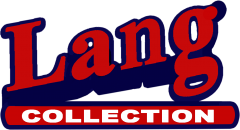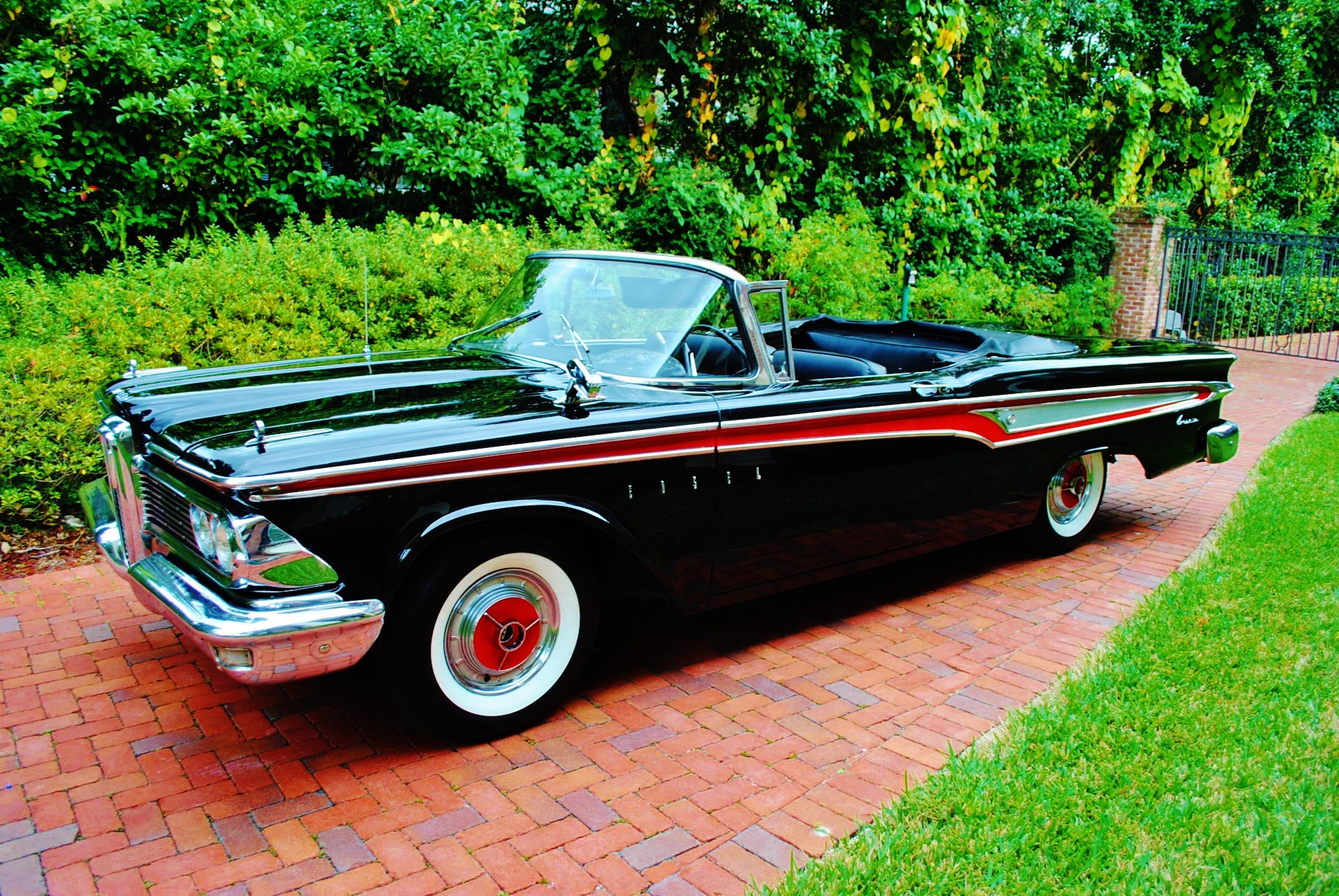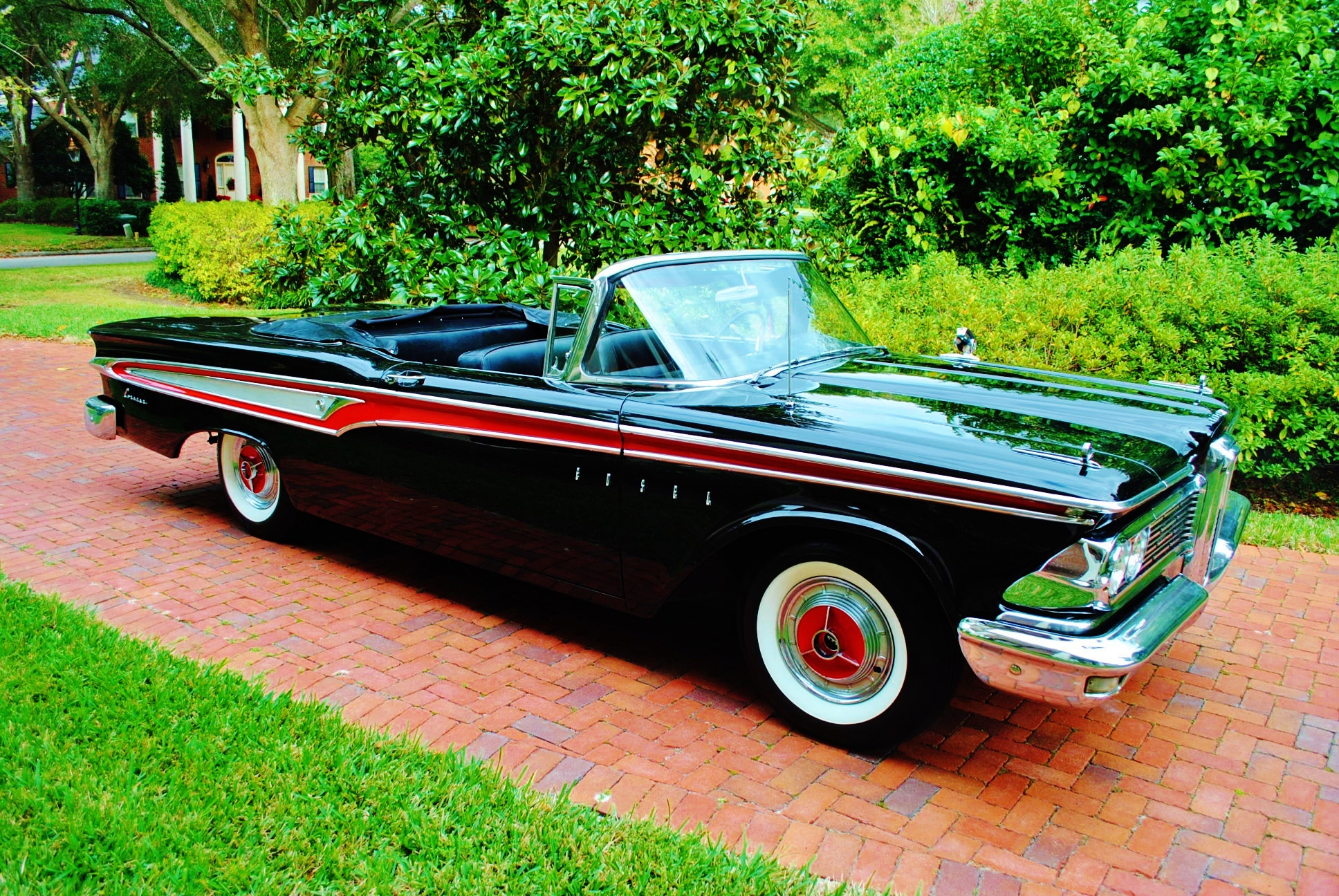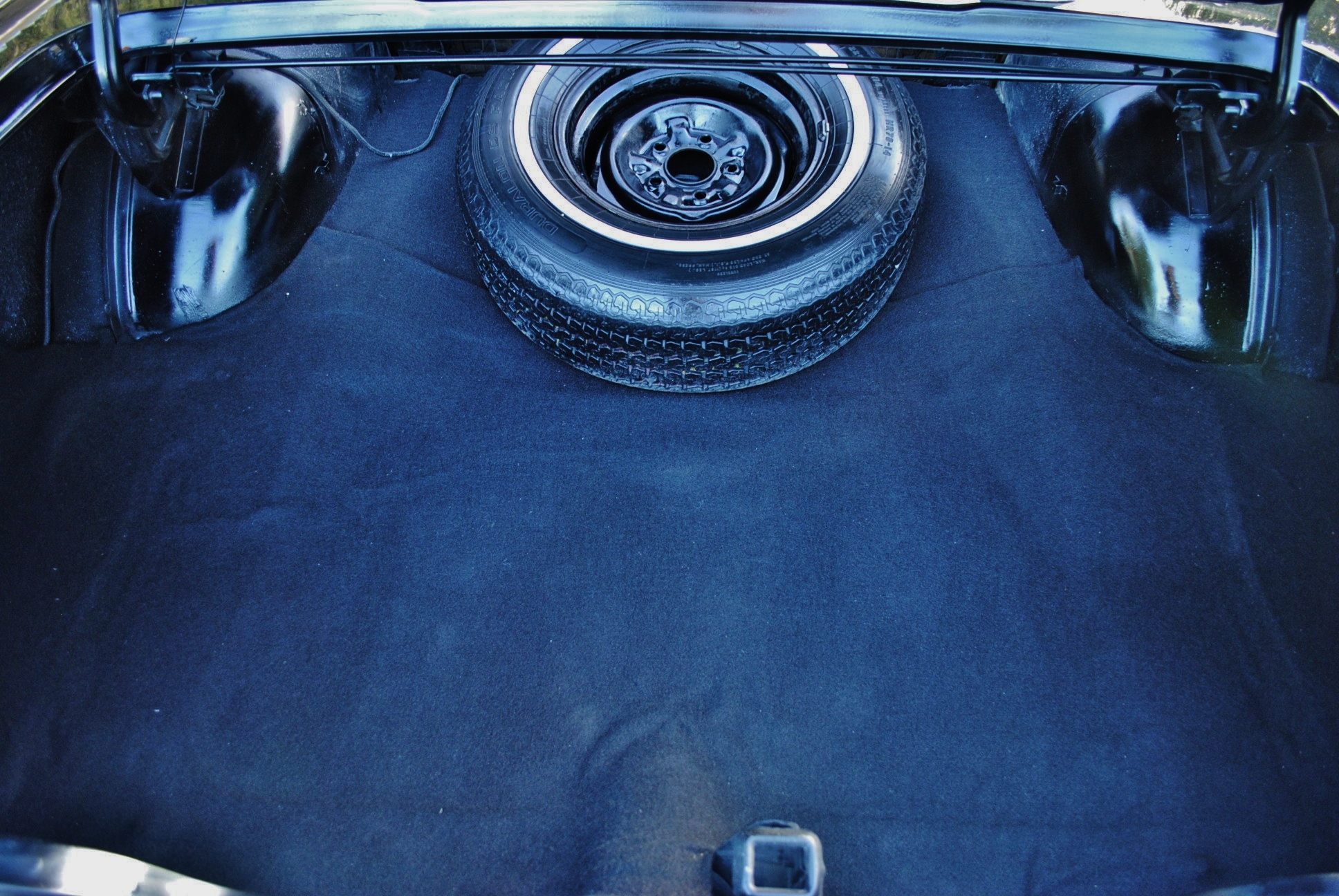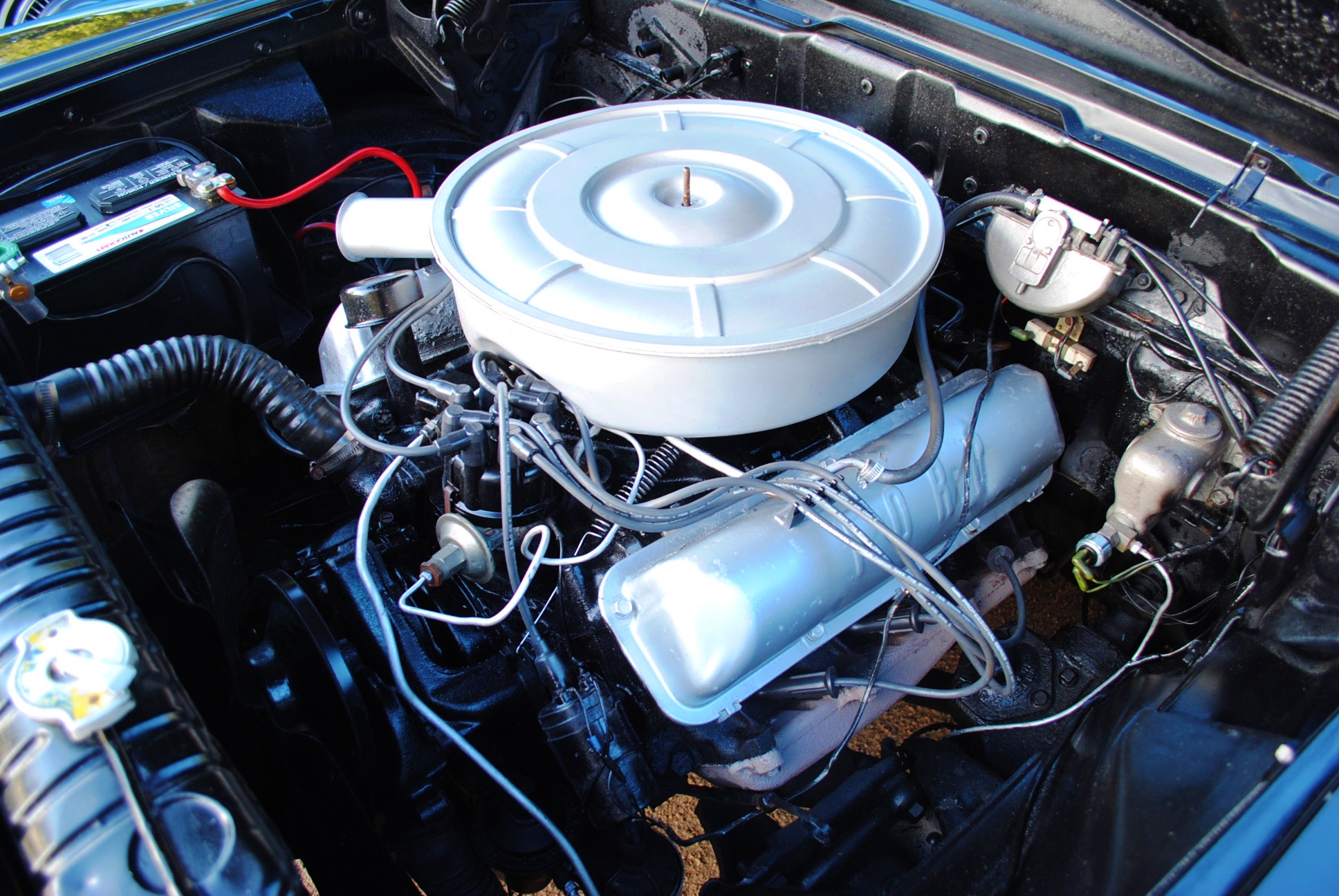1959 EDSEL CORSAIR CONVERTIBLE NO 24
The Edsel is an automobile that was planned, developed, and manufactured by the Ford Motor Company for model years 1958-1960. It was named after the son of Ford Founder Henry Ford I. Edsel Ford died in 1943. It came to the market with high expectations.
The Edsel was designed to make significant inroads into the market share of both General Motors and Chrysler and close the gap between itself and GM in the domestic North American automotive market.
This is one of 1343 Convertibles built, all made in the USA, 0 production in Canada
Base Price: $3072.00 US $4033.00 Canadian
The Edsel Corsair convertible was only built in 1959 Curb Weight: 3790 lbs
Engine: 361 cu in FE V-8 3 speed automatic Wheelbase: 120 in
In 1959 heaters, a defroster, and an AM radio were optional equipment.
More than half a century after its spectacular failure, the Edsel has become a highly desirable vehicle among vintage car hobbyists. Fewer than 10,000 Edsel’s of all vintages and incarnations survive and all are considered valuable collectors’ items, convertibles even more so.
The Edsel
No name from automotive history conjures up more discussion than the production of the Edsel which began on Sept 4, 1957. Projected to sell 200,000 units the first year alone, only 118, 287 (including 7,440 in Canada) were made during its entire three year run. Why? The answers to those questions have been the fodder of business school classes ever since. Let’s briefly look at the record and some of the reasons how its failure became the grand-father of one of the most successful vehicle launches in history and the Edsel itself became a very coveted collectors item.
The “E” Project was handed to the market research dept in 1955 to find out what the North American consumers wanted in their cars? Intensive research followed with the results being handed to Ford executives where decisions were made to build the “E” car based on that research. Those decisions were then handed off to the designers and engineers to develop the car tailored to the desires of the American Public. That was the plan. It read well.
After almost a year of intensive targeted advertising that had everyone talking about this new “Everyman’s” car, the Edsel made its debut. People flocked to the dealerships in record numbers to see this new wonder car. But after seeing this new Edsel, no one bought. Even in hometown Detroit, sales were sluggish. Across North America they were non-existent. It seems that when people came to look, they saw not a “wonder car of the future” but just another car from the 1950’s. And it was expensive! Ford had made sure to equip every one of the first Edsel’s on the show room floor to the hilt. They were just too expensive for the perceived value.
Why did it fail so spectacularly? First it was the wrong car at the wrong time. The market was sliding into recession in 1957. Smaller was better. Inexpensive would be best. Annual VW sales skyrocketed (50,000+) during this same time period. The Edsel was equipped with a big V8 engine that required premium fuel and offered poor gas mileage. It was also priced inside Mercury’s market segment. It’s always bad policy to compete with your self.
Also, the cars coming to the dealerships suffered poor quality control in the factory. They shared the same assembly lines as their Ford and Mercury cousins. The men on the line had to change tools and parts bins for the occasional Edsel and then switch back to the Ford brand with no allowance made in their hourly quota. Many Edsel’s left the factory incomplete with the extra parts in the trunk with instructions on how the dealership personal were to finish the cars.
Along those same lines, there were many “advances” on the Edsel such as self-adjusting brakes and the Teletouch pushbutton automatic transmission. Placing the Teletouch buttons in the centre of the steering wheel made it problematic as it was where the horn button traditionally was found. Also, parking on hill was tricky and the procedure for shifting gears was clumsy and the wiring for it were routed too close to the exhaust manifold sometimes causing complete failure. Also, the mechanics in the dealerships were not trained sufficiently on this new equipment to service it properly. Lastly Ford executives evidently threw all the market research out the window and went with what they felt should be done including the name they bestowed on it.
Two positive things came out of the Edsel Project. First, Ford learned many lessons. The Falcon, introduced in 1960, had its own dedicated production line and sold over 400,000 units in its first year alone. Later, in 1964 the Mustang, with a more targeted advertising campaign, was introduced by Ford to even higher public response. Second, the remaining Edsel’s are now exceptional collector’s items. We see before us the Lang Collection’s rare and beautiful 1959 Edsel Corsair Convertible. On looks alone you have to wonder why it didn’t sell better than it did.
